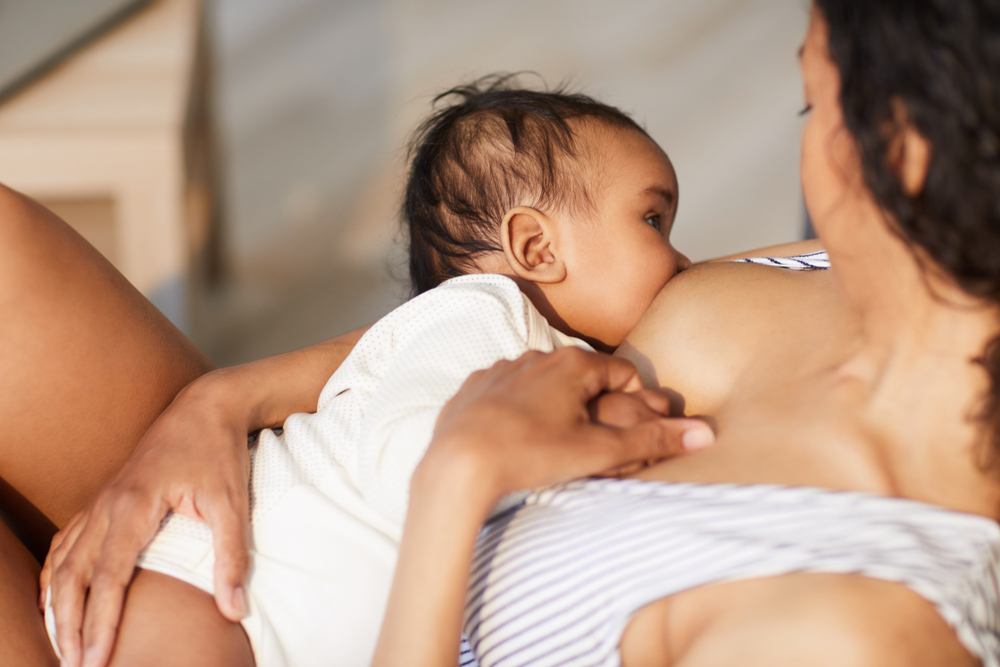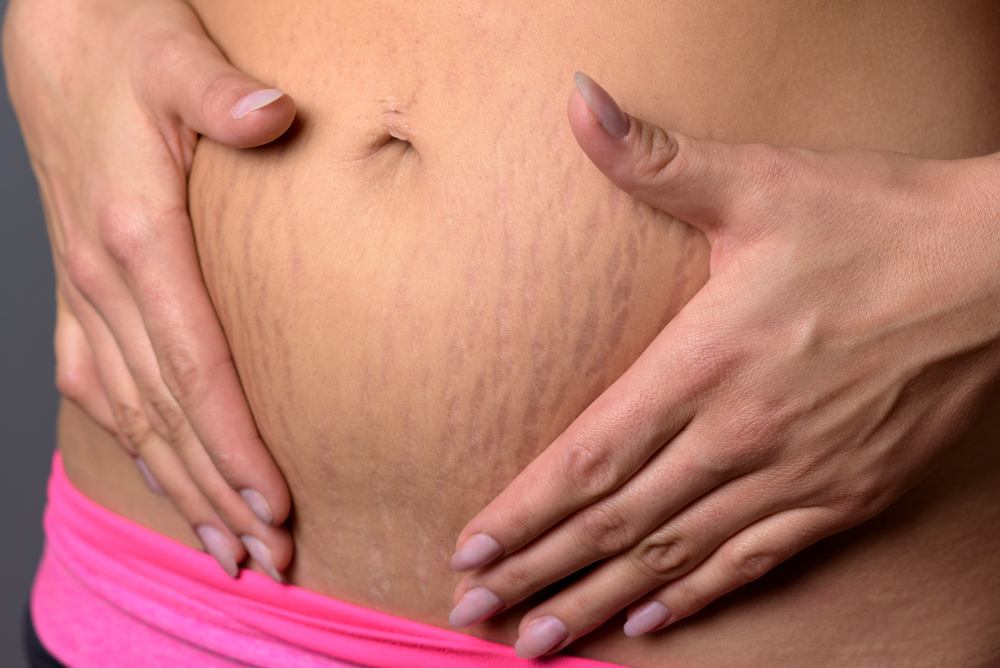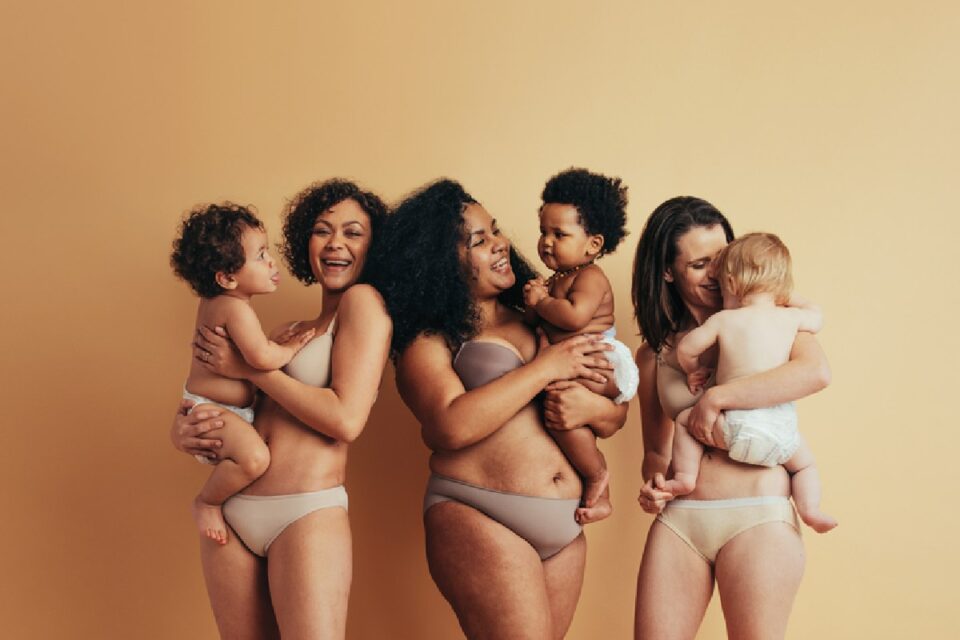Pregnancy changes your body, and it continues to keep evolving after you give birth. From bigger breasts to postpartum incontinence, there are many different physical changes that you should be prepared to experience after giving birth. Here are eight postpartum body changes that are completely normal:
Table of Contents
1. Bleeding and Discharge
You do expel quite a bit of fluid and blood during the delivery process, but your body doesn’t get rid of all of it in one go. If you delivered vaginally, you can expect relatively heavy bleeding and discharge for the first three days or so. The hospital should give you some disposable underwear to wear, which will help keep you dry and comfortable. By the time you’re discharged, you should only be experiencing light bleeding, which can take up to six weeks to fully cease. Check in with your doctor if you are still having to change pads multiple times an hour after those initial three days, or if your bleeding gets worse after lightening up.
2. Cramping
Your uterus expands to the size of a watermelon during pregnancy, and it doesn’t just snap back into place. It needs some time to shrink and move back to its original position. As your uterus shrinks, you’ll feel pains similar to contractions that last for no more than five minutes at a time. If you’re breastfeeding, these cramps can last for the first few weeks. If your pain is steady — rather than short, contraction-like bursts — then you should reach out to your doctor to discuss your symptoms.
3. Incontinence
Your uterus isn’t the only thing that gets stretched out during pregnancy and childbirth. All of your pelvic floor muscles, including those that control your bladder, have undergone a lot of strain, which can result in postpartum incontinence (aka the involuntary discharge of urine). In some cases, the incontinence may actually start before giving birth, as the full-grown baby puts a lot of pressure on your bladder. This leakage normally stops within six months of giving birth. If you’d like to build your muscles down there, then talk to your doctor about doing pelvic floor exercises with or without Kegel balls. You should also talk to your doctor if your gas or bowel movements leak, as this is not normal.
4. Tears and Stitches
If you gave birth via C-section, you’ll have stitches and also possibly staples as well. If you gave birth vaginally, you still might have stitches due to tearing or an episiotomy. The stitches will dissolve on their own as your body heals, but you do need to take proper care of the incision site to keep it from becoming infected. Follow your doctor’s instructions for caring for the wound site and changing your dressing regularly. Contact your doctor if you have a fever, the wound produces a bad-smelling discharge, or the pain gets worse instead of better.
5. Breast Size

Your breasts will increase in size as your milk comes in roughly two to three days after giving birth. If you are breastfeeding, your baby will regularly drain your breasts of milk to relieve the engorgement. You can also pump the last portion if your baby doesn’t drain it completely. If you don’t plan to breastfeed, the engorgement will last about five days until your body gets the signal and stops making milk. In the interim, wear a soft, supportive bra and use cold compresses to ease any aches. Hot compresses might cause your breasts to express milk, which will only prolong the engorgement.
6. Hair Loss
All that extra pregnancy estrogen prolongs the growth cycle of your hair, which causes less to fall out. As a result, your hair looks longer and thicker than ever during your third trimester — until you give birth and your estrogen levels take a dive. Then, your hair will thin out to its previous level and return to normal within nine to 12 months. While it may feel like you’re losing an abnormal amount of hair, it’s really just your body getting rid of all the extra hair that you held onto for so long, so don’t worry about going bald.
7. Stretch Marks

When your skin expands too fast at once, it develops stretch marks, or deep red or purple lines in the skin. Pregnant women often develop them on their bellies, but they may also get them on their hips, breasts, and other areas of their body as well. Over the next six to 12 months, the color of the stretch marks will fade to silver and then eventually a shade or two lighter than your skin. While retinol does show some promise in helping to fade stretch marks quicker, it should not be used by pregnant or breastfeeding women.
8. Other Physical Changes
Your body might experience some other changes as well. For instance, some women’s hips become permanently wider after childbirth. Some women’s feet also never go back to their pre-pregnancy size either. You might also find that your nipples become darker and larger and never go back to their original appearance. All of these changes are totally normal and no cause for alarm! A few women also experience a separation of the vertical abdominal muscles, a condition called diastasis recti. This condition usually heals up in the weeks and months following pregnancy. If your separation is unusually wide or lasts an unusually long time, your doctor might recommend physical therapy to help strengthen the muscles and bring them back together.
You might be tempted to dwell on all the ways your body looks different after birth. While many of these changes may seem strange compared to your pre-pregnancy body, they’re all totally normal, and many of them naturally heal on their own as time passes. Try not to be too critical of yourself, and instead focus on what you just accomplished: your body created, nurtured, and delivered a baby, which is an amazing feat!


